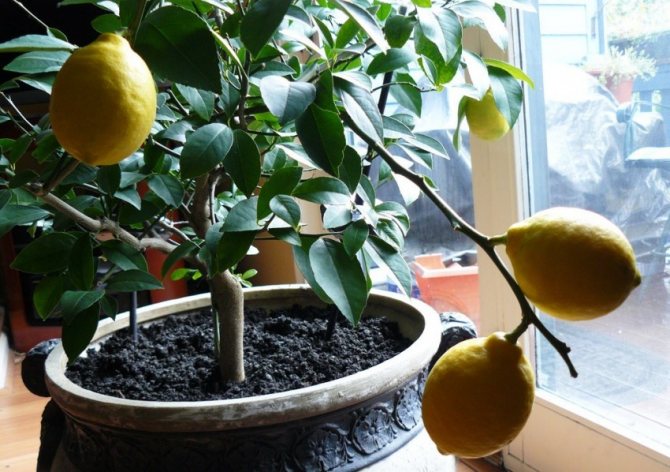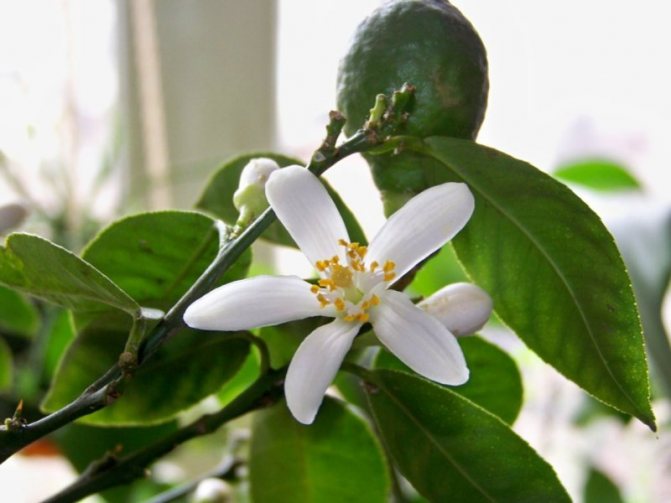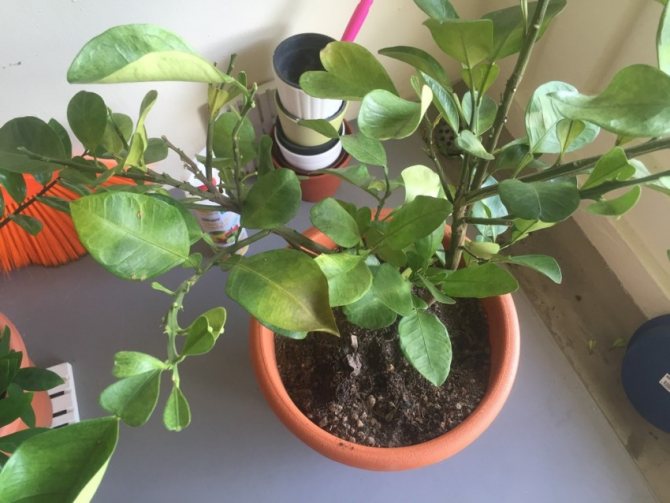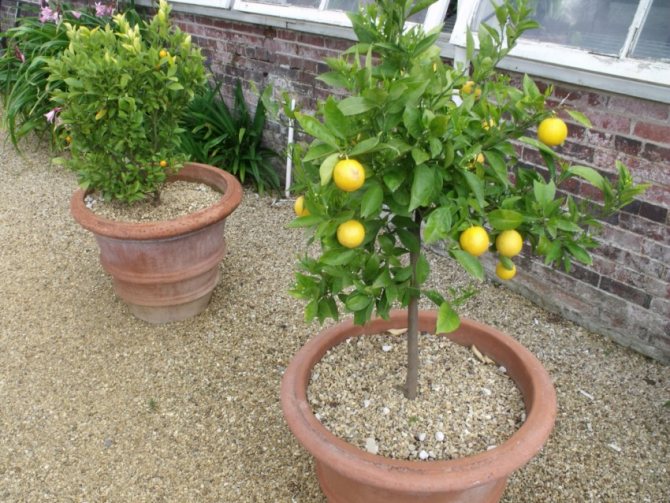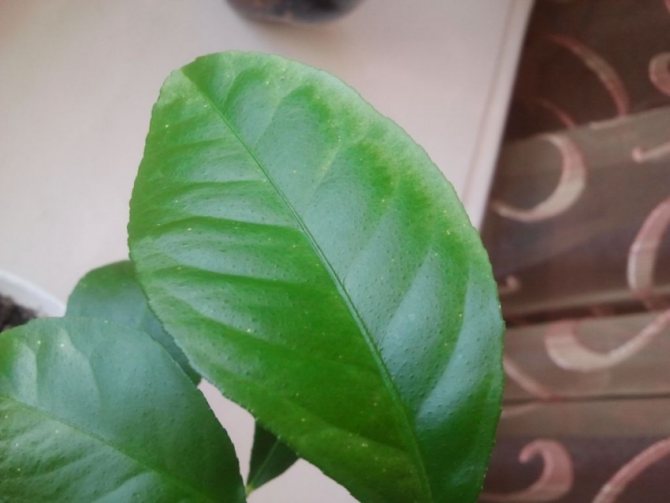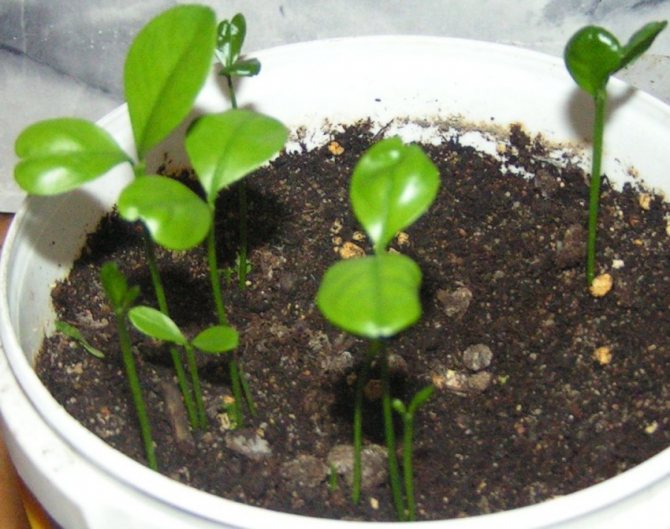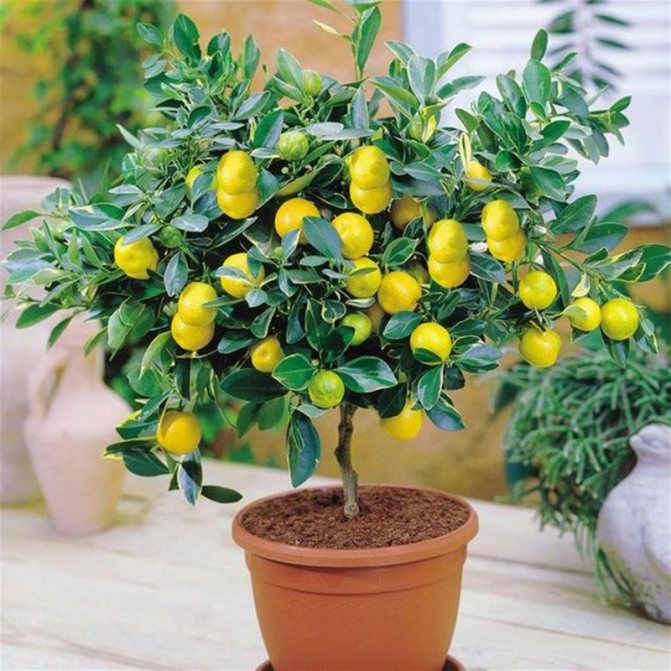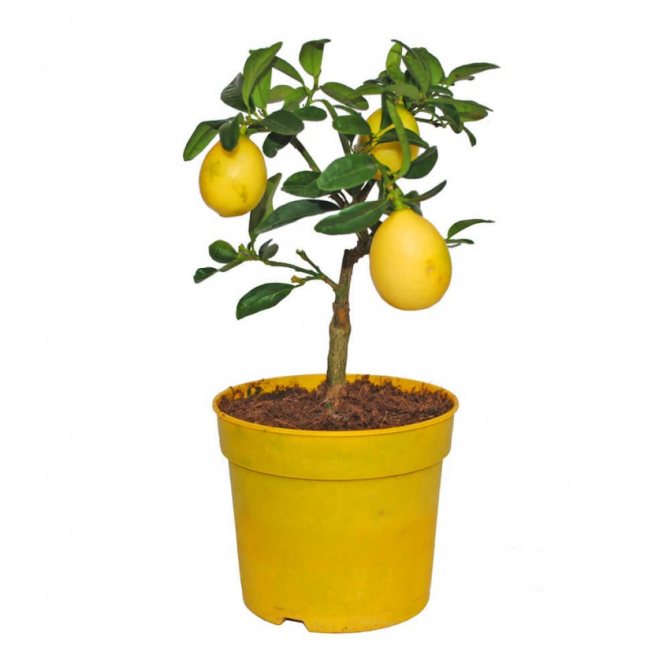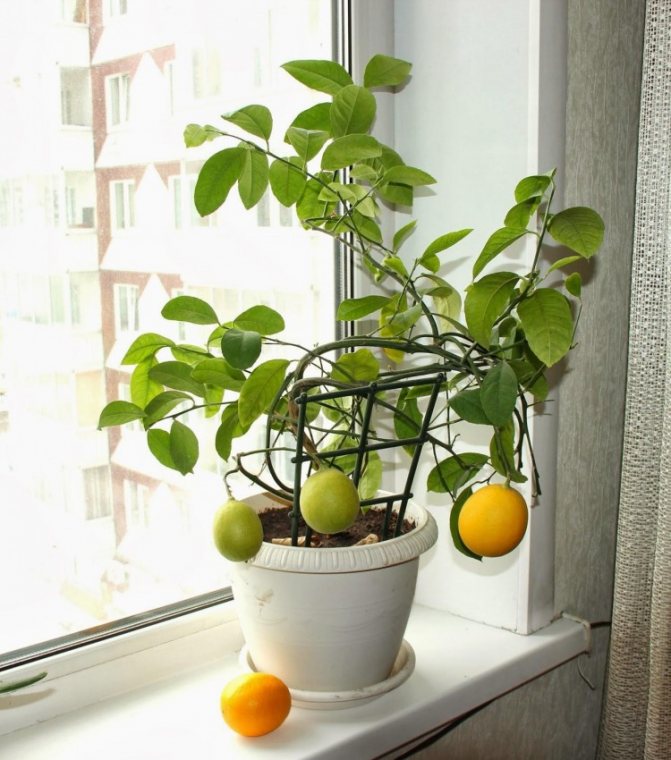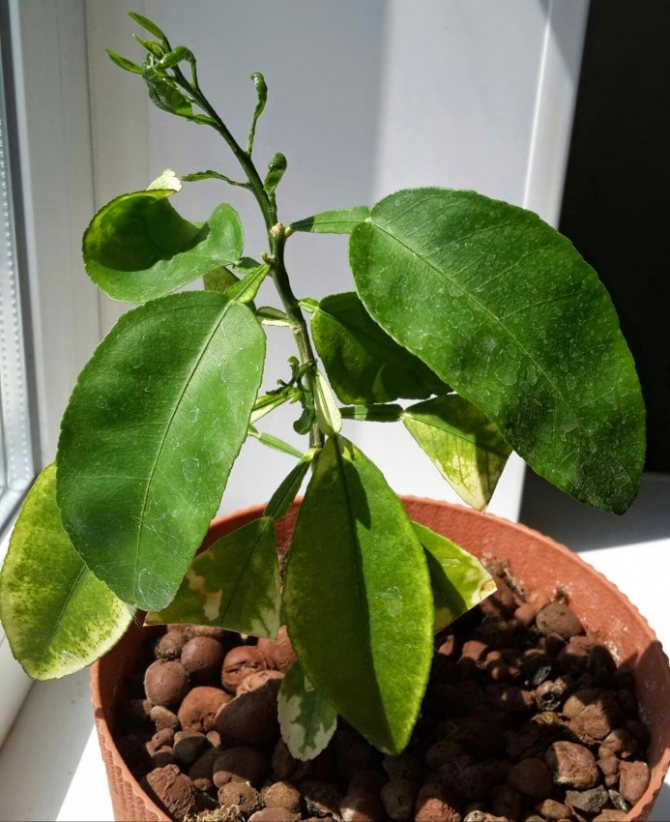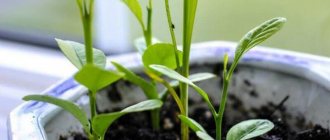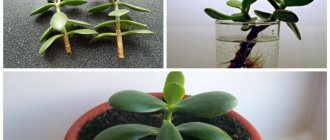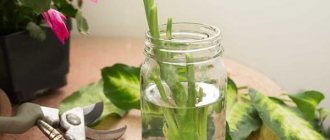Over the past few years, there has been a significant increase in the interest of indoor plant lovers in the cultivation of citrus crops in their homes. The lemon tree is a small tree with glossy, deep green leaves that can produce small, fragrant fruits. Indoor lemon requires a lot of care and maintenance. Transplanting a lemon at home is one of the most important and significant moments, because the slightest mistake can lead to the death of the plant. How to transplant lemon at home? How to correctly follow the procedure and avoid significant mistakes?
When to replant lemon
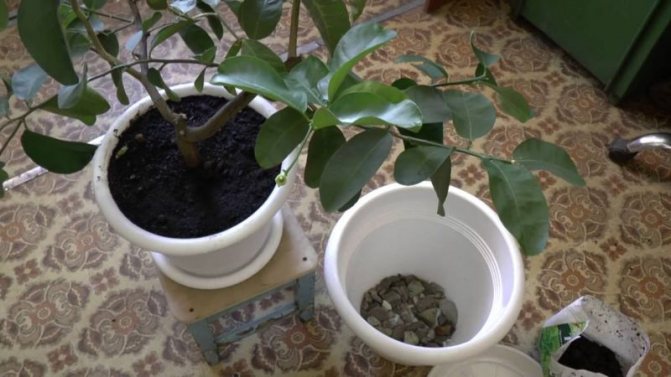
The home-grown lemon tree requires regular replanting. Citrus cannot be planted immediately in a large pot, otherwise its root system will not be able to absorb a sufficient amount of trace elements and will develop incorrectly. This will result in a lack of flowers and fruits.
Another reason for the need for regular replanting concerns the soil. Over time, insoluble compounds are formed in the old soil, which remain from the applied top dressing. The composition of the soil changes for the worse. The plant can no longer absorb nutrients. This becomes the cause of leaf fall and death.
In some cases, unscheduled transplants are used. They are necessary if the tree is infected with diseases and pests. Sometimes the procedure is carried out after a long violation of the rules of care and leaf fall.
Planned transplant
A planned transplant is carried out regardless of the condition of the lemon. The period between treatments for plants of different ages is not the same:
- 1 year. In the first year, the young plant is moved to a new pot 2-3 times. The first time this is done after rooting the seedlings or the appearance of 2 true leaves on the seedlings. The rest of the transplants are done after the roots fill the pot.
- 2-5 years old. Before flowering, the lemon is transplanted annually.
- Plants that bloom and bear fruit. A pot of an adult lemon, which has bloomed and bore fruit, is renewed once every 2-3 years.
Unscheduled transfer
An unscheduled transplant is done regardless of whether the roots have filled the pot. This is done in the following cases:
- Root rot. This disease affects the roots of the plant, causing them to rot. External signs are revealed when the disease has already started, and the lemon has begun to shed its leaves. It is treated only by transplanting into a new soil with the preliminary removal of the affected roots.
- Excessive watering of the soil. This changes the composition of the soil, and the roots of the lemon begin to rot. To save the plant, it is transplanted into new soil. A similar problem is signaled by waterlogged boggy soil and yellowed leaves.
- The plant has dropped its leaves... If no signs of diseases and pests, as well as mistakes in care, are found, the tree is taken out of the pot. Perhaps it's the root system. Even if this is not the case, the tree often feels better after replanting.
- Water quickly flows into the sump or stagnates. This indicates the wrong composition of the soil. We'll have to transplant the plant and replace the land.
- Increased acidity of the soil... Lemon loves slightly acidic soils. If the indicators turned out to be increased, the problem is solved by transplanting the plant into the soil with the addition of lime or ash.
An unscheduled transplant is possible at any time of the year. You cannot wait for the right moment, otherwise it will not be possible to save the plant.
Note! In the cases described, it is possible to transplant even a flowering and fruiting lemon to a new place. Since there is a need to cleanse the roots from the soil, before the procedure, inflorescences and fruits are plucked from the tree.
Replacement of soil and pot immediately after purchase
There is an opinion that the lemon must be transplanted immediately after purchase. This makes sense, as the soil from the store can be contaminated. In addition, often the pots in which the lemons are sold are substandard or too small.
How to understand that a transplant of a purchased lemon is necessary:
- Examine the root system. If roots fall out of the drainage holes or the root system is visible through the holes, then it is necessary to replace the pot with a larger one.
- Stick the skewer into the moistened soil. If it goes tight into the ground and clings to the roots, a transplant is necessary.
- Acidity check. Lemon planting shops often use a mixture with high peat. Such soil has a high acidity, unacceptable for lemon. The earth is checked using a litmus test. If the indicators are increased, the soil is replaced with a new one.
If, after such checks, doubts remain about the need to transplant a lemon, the tree is taken out of the container along with a lump of earth, the root system and soil are examined.
If the earthen lump is completely covered with roots and there are dry, darkened and slimy areas in the root system, it is worth replanting the plant. If the roots in the coma are not visible and it is falling apart, you need to take a large container.
It is categorically impossible to make a transplant if the plant is a trunk with several leaves. This is a rooted stalk. It is transplanted when the roots fill the entire space of the pot.
Note! So that the lemon brought from the store does not infect other indoor plants, in the first week it is quarantined in a separate room and treated with fungicides and insecticides.
Lemon transplant timing
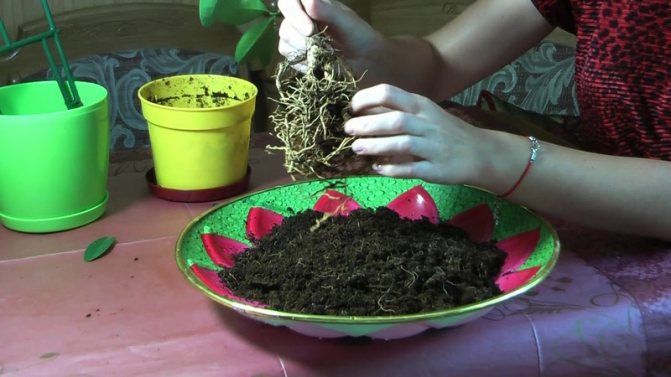

It is best to replant lemon before active vegetation. This is done in late February or early spring. In the fall, this procedure is carried out only if absolutely necessary. Experienced citrus growers advise paying attention to the indicators of the lunar calendar.
When to transplant lemon at home in 2020:
- January - 1, 5, 6-8, 25, 27-29;
- February - 1-3, 6-7, 9, 20, 23-25, 28-29;
- March - 1, 4-6, 9, 17-18, 24, 27-28.
Growing features
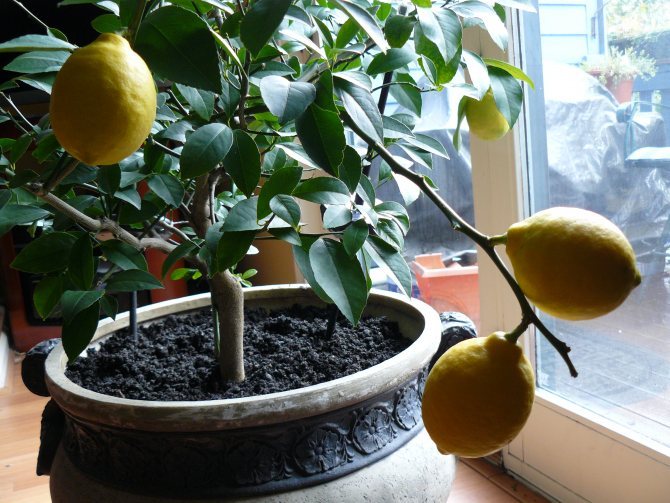

Growing a lemon tree at home is not as easy as some other houseplants, but it can be done. For normal growth, he needs a spacious room and good lighting. In addition, lemon requires constant attention and care. But all these chores are worth it. In gratitude, growers receive tasty and healthy fruits, as well as a pleasant enchanting aroma.
While waiting for the first fruits, you need to be patient. It takes several years from the moment of planting before the tree blooms, and then presents the owner with the first lemons. Every year the plant will gain more and more strength, delighting with a rich harvest. Growing a lemon tree you need to take care of favorable conditions for him, among which:
- high-quality drainage;
- regular fertilization of the soil;
- a bright room with a window for ventilation;
- maintaining a cool temperature in winter.
Only in such an atmosphere will the plant grow fully and feel comfortable.
Preparatory work
For the transplant to be successful, it is important to properly prepare for the procedure. Attention is paid to the soil, the pot and the plant itself.
Pot selection
The correct container lets air into the soil and looks aesthetically pleasing.
What kind of pot is needed for a lemon:
- Plastic transparent cups... They are convenient to use in the early stages of lemon growing, when it needs to be replanted several times a year. The plant is transplanted as soon as the roots fill the container. The degree of root growth is visible through the transparent plastic. The glass must be wrapped in a dark cloth, and drainage holes are made in the bottom. In the second year, real pots are already used.
- Clay pots. This is the best option for growing lemon. When the soil is wet, the clay absorbs some of the water, and after the soil dries up, it gives the liquid back. It is believed that air enters the soil through the smallest pores in the clay container. Such a container is soaked in warm water for several hours before planting. Then it will not contribute to the premature drying out of the earth.


- Plastic pots... The cheapest option that looks aesthetically pleasing. They are convenient for young trees that are transplanted into a new container every year. It should be borne in mind that plastic does not absorb moisture, and a thicker drainage layer will have to be poured into such a pot.
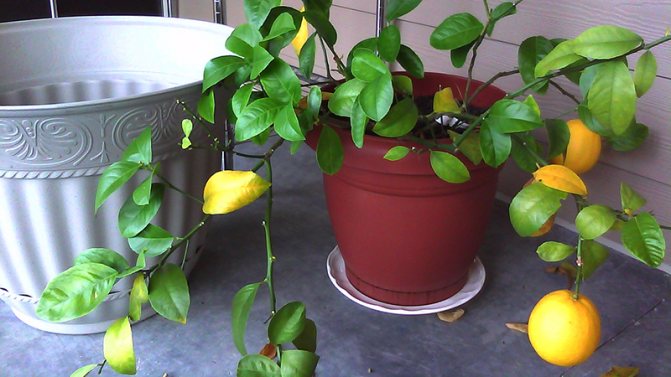

- Wooden tubs with a narrow bottom are used for mature plants. In them, the root system feels as comfortable as possible for a long time. Before use, the inner surface of the tub is burned with a blowtorch to reduce the likelihood of wood decay and disinfect it. The most durable are pine and oak pots.
As for the size of the container, the first pot is chosen with a volume of 0.3-0.5 liters. Further, the diameter of the container is increased each time by 3-5 cm.
Before use, the pots are disinfected - soaked in a dark pink solution of potassium permanganate or boiling water.
Important! The lemon pot must have drainage holes.
Soil preparation
Loose, nutritious soil is suitable for lemon. It is important that the acidity is neutral or slightly acidic. The indicators are checked using a litmus test.
Some gardeners prepare their own soil mixture.
Ingredients for one of the options:
- garden soil - 2 parts;
- river sand - 1 part;
- sod (forest or meadow) land - 1 part;
- humus - 1 part.
Add 1 tbsp to the resulting soil mixture. ash. It is disinfected by pouring a dark pink solution of potassium permanganate or a product prepared from 5 liters of water and 1 tsp. copper sulfate. Another option is to ignite the soil mixture in the oven.
It is not recommended to use peat for soil. It increases acidity. This is especially true for high-moor brown peat.
Note! White or gray sand is suitable for preparing the soil mixture. It is better not to take yellow and orange, as they have too high an iron content.
Drainage will also be required. Usually they use small expanded clay or crushed stone, small ceramics, shell rock. Drainage is also disinfected.
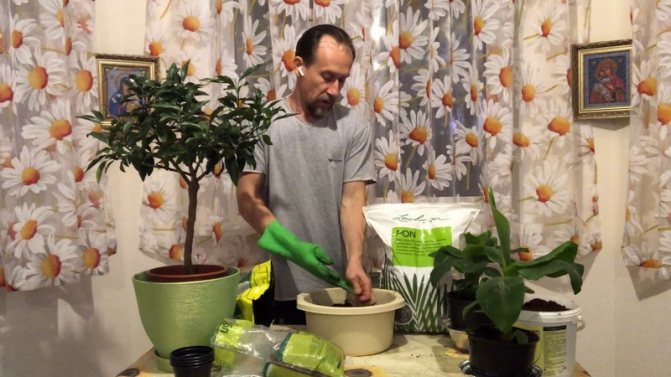

Preparing the tree
Not only the soil and containers need preparation, but also the plant itself. Before moving the tree to the pot, it is watered and fed.
Top dressing is applied 5 days before transplanting. If using the transshipment method, water the lemon 2 days before the procedure. To successfully transplant the plant, the soil is moistened 1 day before the procedure.
Pests and diseases
The most common pests cirrus crops are mealybug, scale insect, false scale insect. Citrus fruits are also affected by aphids and spider mites.
Diseases citrus fruits arise due to improper care and damage by various pathogens (which is also often due to errors in the content).
Fungal diseases often affect citrus fruits on plantations or in greenhouses. Drying and blackening of branches - malseco are of a fungal nature; gum flow — gommosis, when a wound forms on the trunk, from which a liquid resembling resin oozes; leaf spot and anthractosis, when wet spots spread along the leaf and subsequently merge; powdery mildew, when a white powdery coating forms on the leaves. The fight against fungal diseases is reduced to the establishment of care, to the removal and destruction of the affected parts of the plant, to the treatment with systemic and contact fungicides.
Sometimes a black bloom forms on the leaves of citrus fruits, which can be easily removed with a damp swab - this is a sooty mushroom. It does not harm the plant, usually settles on the sugary secretions of pests. It is necessary to eliminate the cause of the sugary discharge, remove the sooty plaque with a swab soaked in soapy water, wash well under a warm shower.
Diseases caused by viruses appear as a marbled coloration and cannot be treated.
Causes of yellowing of leaves: chlorosis caused by a lack of iron, magnesium, sulfur, zinc, excess calcium; lack of nitrogen; lack or excess of light; spider mite lesion.
The reasons for the appearance of brown spots on the leaves: non-compliance with the irrigation regime (overdrying or waterlogging of the soil); sunburn; a burn from a strong dose of fertilizer; imbalance in the batteries; fungal and bacterial diseases.
Cause of falling leaves citrus fruits can have any strong stress: sudden temperature fluctuations, hypothermia, overheating, overmoistening of the substrate, overdrying of the substrate, improper transplantation, too much fertilizer dosage, prolonged lack of light.
Why is leaf fall dangerous? Depending on the age, lemon leaves perform different functions; with aging, they turn into a storehouse of nutrients, ensuring the growth and development of young growths. The loss of these leaves leads to the depletion of the plant.


Step-by-step instructions for transplanting
Transplant methods vary. Different technologies are used for lemons of different ages.
If the tree is already blooming and bearing fruit, proceed as follows:
- The day before moving to a new pot, the lemon is watered abundantly. This makes it easier to remove soil from the root system. The plant is removed from the pot. Remove at least 60% of the old soil.
- Examine the root system. Dry, decaying, brown and damp roots are removed. Places of cuts are treated with a light pink solution of potassium permanganate.
- A layer of soil and drainage are poured into a new container. Lemon is planted without deepening the root collar.
- The soil is watered with a light pink solution of potassium permanganate and a solution of a root formation stimulator.
The transplanted lemon is placed in a warm, bright place where the risk of exposure to direct sunlight is minimal. The first 4-5 days it is not watered, but abundantly sprayed from a spray bottle. Then the daily soil moistening is resumed.
After such a transplant, the tree is stressed. So that it quickly recovers and does not get sick, any negative effects are excluded.
Transshipment
The transshipment is used for a planned transplant of a healthy lemon aged 1 to 5 years. After the procedure, the plant does not experience stress, since its root system is not damaged.
Step-by-step instructions for transplanting:
- Lemon is removed from the pot along with a lump of earth. It is important that the soil is not too wet or too dry.
- The earthen lump is cleaned of drainage and the top layer 2-3 cm thick.
- The tree is moved to a new pot filled with disinfected drainage. Free space is covered with soil.
- Lemon is poured over with warm, settled water.
In this case, the plant does not need special care. It is enough to follow the usual regular procedures.
Working with old plants
Old trees that have reached their optimal size are not replanted. To get rid of insoluble salts, the topsoil is replaced annually.
To do this, remove a fourth of the earth from above, trying not to damage the root system and trunk.The remaining soil is rinsed until clear, clear water flows out of the pot.
New soil is poured into the pot. Lemon is watered with a solution of superphosphate and potassium salts.
Quality control
The quality of the prepared soil should be checked beforehand. With the help of litmus paper, you can independently determine the pH level. To do this, take a lump of wet soil and press it tightly against the paper. Green and yellow colors indicate a normal pH level (6-7). With increased acidity, the indicator will be red, and blue - if the soil is alkaline.
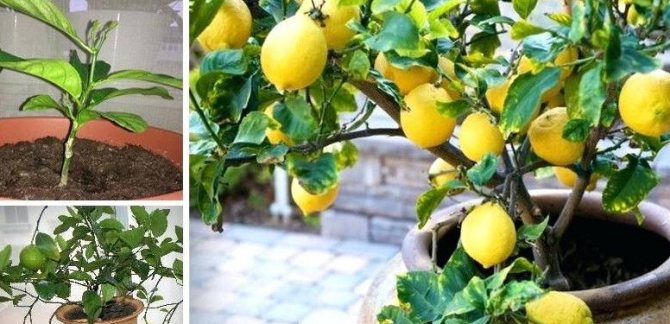

You can test for the content of impurities in petroleum products. To do this, take a container with clean water, add soil there, mix thoroughly. Then the soil is allowed to settle. After that, they look to see if there are streaks on the surface of the water. If there are any, then this indicates the presence of petroleum products, such land cannot be used for planting indoor plants.
Reproduction of lemon at home
Growing a lemon at home is easy. Both generative and vegetative methods of its reproduction are used. Both options have advantages and disadvantages.
Seeds
Seed propagation of lemon in most cases gives only a wild plant.... However, such a tree is distinguished by increased endurance and unpretentiousness. Later, it blooms and gives less tasty small fruits than cultivated plants, but becomes a good stock for various varieties and hybrids.
To grow a lemon from a seed, it is important to choose a suitable planting material. The fruit for its receipt must be ripe, have a uniform color. It should be free of rot, stains and other signs of infection and pests.
Good bones are light, convex on both sides and firm. They are distinguished by uniform color and absence of spots.
Note! It is recommended to take more seeds than the plants require. Not all of them will germinate, and some will die during the vaccination process.
Seeds are sown to a depth of 1-1.5 cm in a total container. After planting, the soil is watered with water, covered with foil and removed to a warm place.
After the emergence of seedlings, the plants begin to ventilate, gradually increasing the duration of the procedure. They are seated in individual containers after the appearance of 2 true leaves. The next time, the transplant is carried out when the roots fill the pot.
Cuttings
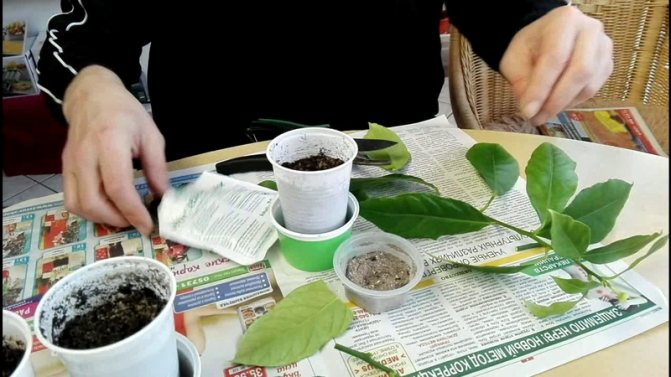

Cutting allows you to get a varietal lemon with characteristics of the mother plant. The tree begins to bear fruit as early as 3-4 years. However, plants obtained from cuttings are less hardy than those grown generatively.
Cuttings for growing lemon are bought in nurseries or cut independently from a fruiting tree. The mother plant should not show signs of pest or infection. The branches from which the planting material is obtained must also be healthy.
Such a distance retreat from the edge of the branch so that 2-3 live buds are present on the pruning. The stalk is soaked in a light pink solution of potassium permanganate and a root formation stimulator.
Then the cutting is dug into the ground so that it stands unsupported. The ground is watered, the branch is sprayed with warm water and covered with a bag. Air and spray daily.
The awakened buds testify to rooting. If the seedlings are in a common container, they are dived at this stage. When planting directly into individual pots, the transplant is carried out when the root system fills the entire container.
Vaccination
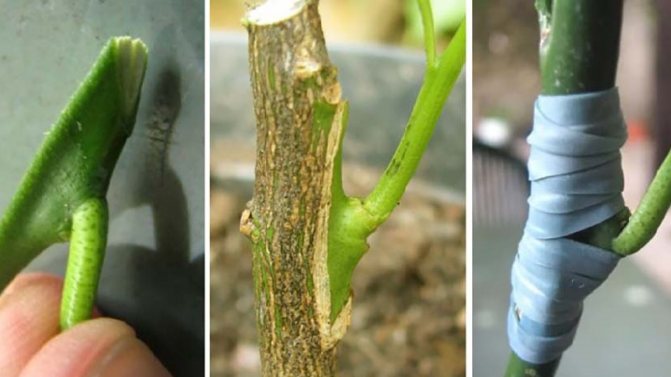

Grafting is used to get poorly rooted varieties or to cultivate wild boar grown from stone. It is more convenient to graft the stock to a young scion. In this case, the plants are cut so that only the trunk remains.
A cut 1.5-2 cm deep is made in the center of the trunk. The branch from the side of the cut is grinded so that a wedge is obtained.The scion wedge is inserted into the rootstock incision. The junction is wrapped with garden tape or electrical tape.
The grafted lemon is placed under a bag or cut bottle, ventilated and watered regularly. The fact that the scion has taken root is evidenced by the formed leaves and shoots.
Is it possible to grow a lemon tree from a seed?
Citrus fruits have a beneficial effect on the state of immunity. This is another reason for their popularity among flower growers. It is possible to plant a lemon tree from a seed at home. The fruits of the culture contain a large number of light seeds. They are used to plant citrus trees. In order for a lemon to grow from a seed, it is necessary to take into account a number of important recommendations:
- Choose ripe yellow fruits. In green lemons, the embryos will remain immature. You cannot get seedlings with their help.
- For planting, use 10-15 large seeds at once. This is necessary in order to choose the most active of the resulting seedlings.
- Find a special variety of lemons that grow successfully at home. For this purpose, the following types of citrus are suitable: Pavlovsky, Meyer, Genoa, Jubilee.
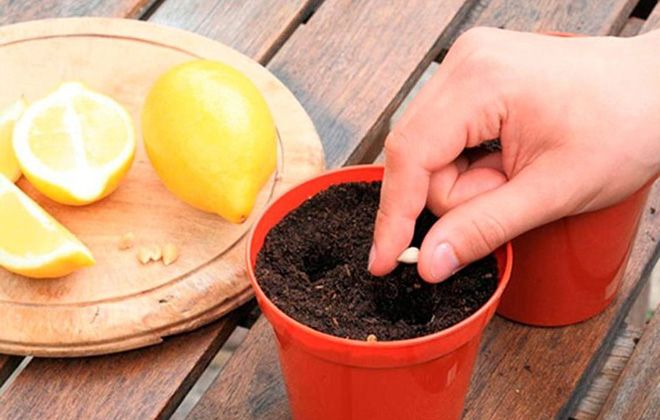

Threw off the leaves, what could be the reasons?
Did the lemon shed its leaves in the fall? What to do? Why is this happening?
Lack of daylight


In the fall, insufficient lighting can cause leaves to fall.
Such leaf fall is caused by the stress of the plant on external climatic conditions.
In order to avoid this, you need to install sources of additional lighting.
Also, if possible, you should put a pot of lemon on the south window.
Soil depletion
In summer, during the active growing season, the plant consumes minerals and trace elements from the soil.
Nutrient deficiencies can be identified by leaf fall.
You will find more information on how and what to fertilize lemon at home in our article.
Too dry air
The dry climate, which is unusual for this houseplant, is a stressful condition for it.
And in response to such conditions, he responds with falling leaves.
To avoid this, it is necessary to regulate the room temperature, do regular spraying and more often arrange lemon showers.
Care
- Correctly selected soil, proper care for it and timely watering will provide favorable conditions for your favorite plant.
- It is also necessary to carry out such actions as loosening and mulching the soil, apply the necessary fertilizers.
- You also need to make sure that pests do not settle in the pot.
Following all our recommendations, you can grow a beautiful, healthy plant that will delight you with abundant flowering and large fruits.
Good luck!
If you find an error, please select a piece of text and press Ctrl + Enter.
Correct selection of a new pot
A high-quality transplant of a lemon tree is impossible without acquiring a new spacious flowerpot. It is chosen according to several parameters:
- Manufacturing material. The best pot material for a lemon tree is clay. It is very porous, so it allows air and a small amount of water to pass through. An earthen lump in such a pot dries out evenly, preventing moisture from stagnating in the soil. This is very beneficial for the root system of the lemon and prevents rotting. Other materials (glass, plastic) do not have these properties. When using them, it is necessary to regularly check soil moisture and carefully monitor watering;
- Shape and size. The lemon tree pot should not be too tall. It is desirable that its height be equal to the diameter. In a deeper pot, there is a high probability of stagnant water in the lower layers of the soil, which leads to root rot. The lemon is transplanted into a larger pot. But it shouldn't be too big. It must be remembered that until the roots of the lemon tree grow to the sides of the pot, it will not bloom. Therefore, a new flowerpot is taken 1-2 cm wider than the previous one.
Other important recommendations
To ensure the prevention of fungal diseases, you need to add a little birch coal to the soil. You can put it on top of expanded clay.
Some gardeners propagate lemon by grafting. The planting material is kept in the sand for 1.5 months, then they are planted in open ground. A young lemon takes root in a 13 cm container.
I keep my tree in a ceramic pot. If the lemon is not properly cared for, its roots will rot. When transplanting, you may notice this problem. To eliminate signs of rot, you need to mix the soil with a small amount of crushed coal, and cut off the damaged parts of the plant.
What soil is needed and how to do it yourself
The soil for replanting lemon needs loose and nutritious enough. It must provide the tree with the necessary nutrients, as well as allow air to pass through well so that the roots do not become waterlogged and do not rot.
The best soil mixes can be found at flower shops. To transplant a lemon tree, you need a citrus soil mixture. But not every composition will be optimal. It is necessary to choose soil that does not contain peat, since peat can significantly increase the acidity of the soil over time.
To prepare the soil with your own hands, you need to take the following components: sod land - 2 parts, leaf land - 2 parts and sand - 1 part. Before the transplant is carried out, it is necessary to treat the soil by steaming in the oven at a temperature of 85 ° C for 20 minutes. In this case, all fungi, bacteria and pest larvae will be destroyed.

